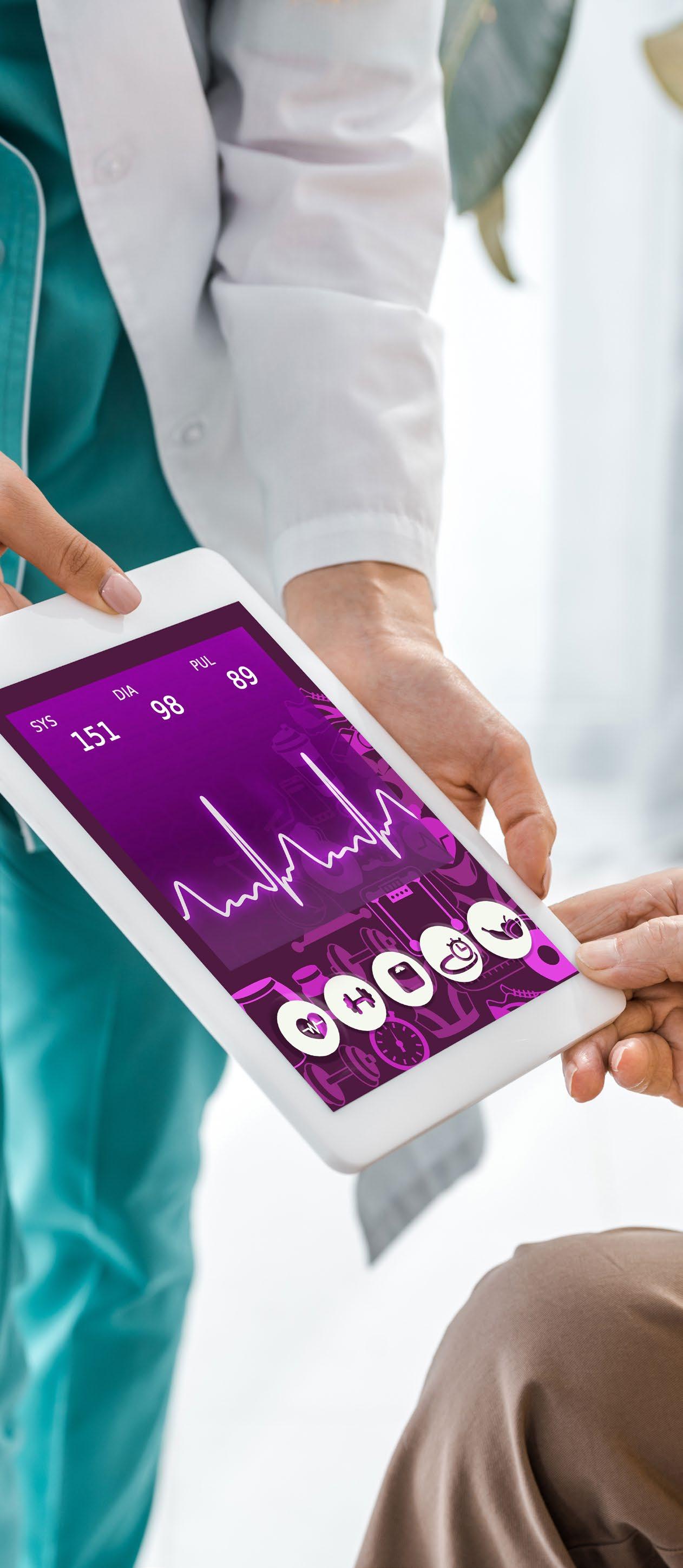
4 minute read
Business as usual
The effects of the Covid-19 pandemic have been felt across the globe with huge consequences for healthcare investors. HealthInvestor UK looks at the outlook for the sector
While the precise economic fallout of Covid-19 will approaches to provision were highlighted,” says Long. vary by sector, none are completely unaffected. We may also see a heightened focus on prevention, and Such widespread disruption often catalyses a consumers increasing their out-of-pocket spend. In the UK, shift in market structures, with oligopolies’ strength tested it has become apparent that Covid-19 is hitting people with by nimbler businesses. The pharmaceuticals and medical underlying and often preventable conditions the hardest. devices sectors are no exception. We have seen an increase in the area of prevention at
As in many industries, the pandemic has accelerated European LifeCare Group, one of Europe’s largest providers previous trends already under way, with technology a of vaccination services. The firm has opened 10 new clinics major driving force in this. Ben Long, a in London since partnering with Inflexion partner at Inflexion says: “Just as remote in 2018, and more recently has seen a rise working has been enabled by technology in patients self-funding private healthcare previously unheard of to many, the Clinicians’ time is services. And Lintbells, a leading producer healthcare sector too has seen changes less monopolised of nutritional supplements for pets in the underpinned by tech innovation. This is by larger players UK backed by Inflexion in 2017, has seen having a dramatic effect in a sector which now and they’re a marked uptick in interest in pet as well typically changes very slowly given the human risks involved.” increasingly willing as pet parent health in 2020. The UK government is taking steps
The Covid-19 crisis has shone a light to engage with towards building a fitter Britain. Over on how countries spend their healthcare digital channels the summer, it announced a £2 billion budgets. While all aim to maximise plan to overhaul cycling and walking in limited funds, the pandemic exposed areas England by creating thousands of miles where some countries found themselves of new protected bike lanes, cycle training under-provided, for example in intensive care provision or for all who want it, and bikes available on prescription. prevention of comorbidities which were then aggravated The government statement said: “Tackling the causes of by Covid-19. “We may see shifts in macro allocations ill health, not just the symptoms, it’s vital to help reduce to healthcare and within healthcare as variations in the demand on the NHS.”
Opportunities for smaller players “We expect a big change to come from digital technology bringing distant markets closer,” Long says. This can create the ability to have high-quality communications with customers or distributors in locations otherwise inaccessible without an onthe-ground sales force – effectively enabling smaller companies to reach global audiences. He points to a recent surgeons’ conference held by a UK manufacturer of surgical instruments in Latin America. Typically, large delegate numbers are the preserve of the global majors, requiring big budgets and vast marketing organisations. However, in this instance, a smaller player was able to attract more than 2,000 attendees given the virtual nature of the event.
The shift in route to market may be a boon to smaller firms, previously faced with large barriers to entry as more established, global pharmaceuticals dominated. “The ability to reach end users with what you are selling has increased,” Long says. “Clinicians’ time is less monopolised by larger players now and they’re increasingly willing to engage with digital channels.”
In the medical devices field, fewer representatives in hospitals is another sign of changing times, with fresh restrictions on numbers on-site and during procedures making it more difficult to access surgeons or clinicians. Medical professionals are increasingly willing to build up their education remotely as a result. “This is an incredible opportunity for smaller innovative firms with new technologies as the bar is raised for accessing surgeons,” Long says.
Day of digital The enforced use of digital technology will also leave a lasting mark on how the life sciences industry brings products to market. A relatively new need for speed in drugs trials combined with reduced access to research sites (such as hospitals, where patient numbers are restricted) is driving the use of technology – namely remote patient monitoring to collect data in trials. Prior to Covid-19, remote monitoring was evolving very slowly, but now even the US Food and Drug Administration has been flexible in adapting trials protocols to allow for the use of remotely collected data, thereby reducing the need for site visits by trial participants. “The evolution is sensible, but it took a pandemic to instigate it,” Long says.
This casts a spotlight on the importance of data and tech in helping to track and analyse it. “Connected devices and other digital technologies look set to be leaving their mark in the devices industry as well,” Long says, pointing to the fact that performance and outcomes are monitored remotely rather than through in-person clinician visits. “The big question now is whether there remains a quickening of time frames going forward, or whether it’s just for now.”
The technologies adopted over the past six months are likely to be here to stay, and they have brought with them myriad benefits, from enabling working from home to facilitating ongoing patient and doctor communication through telehealth. As these benefits become more apparent with time, we can expect a continued uptick in adoption. n










